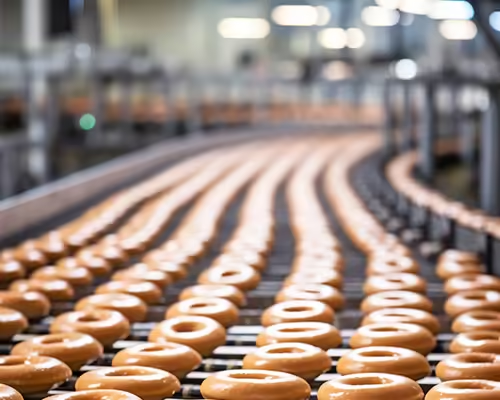


Explore how energy-efficient ovens in bread production lines can cut costs by 20-30% while boosting productivity and sustainability.

By 2025, as demand for bread production surges, many bakeries and food manufacturers face a critical decision: invest in automation or stick with traditional methods. With rising costs and ever-increasing consumer expectations, the question remains—is automating your bread production line worth the investment? This blog explores everything you need to know, from the core components of the production line to the expected return on investment (ROI).
A bread production line is a seamless system of interconnected machinery designed to take ingredients and transform them into loaves of bread ready for baking and packaging. It typically includes:
Choosing the right bread production line depends on the volume you need to produce. Here’s a simple guide:
Determine your needs by considering:
Before investing in a bread production line, ensure that the system can handle common issues such as:
| Issue | Solution |
|---|---|
| Uneven Loaf Weight | Adjust divider calibration |
| Sticky Dough | Review moisture content, adjust mixer |
| Excessive Downtime | Upgrade cooling and conveyor systems |
Modern ovens equipped with energy-efficient technology are transforming the baking industry. These ovens are designed to reduce energy consumption by optimizing heat distribution, using advanced thermal management systems that recycle and reuse heat. By implementing such energy-saving features, bakeries can significantly lower their energy costs—cutting operational expenses by 20 to 30%. This not only enhances profitability but also helps businesses achieve their sustainability goals by reducing their carbon footprint.
Variable-speed drives in bread production lines adjust motor speeds to match actual load conditions, resulting in significant energy savings while maintaining high productivity.
Ready to optimize your bread production line? Schedule a free 24-hour audit to receive a personalized layout and ROI forecast. Our experts will assess your space and needs to design the most efficient setup for your business.
In conclusion, a bread production line in 2025 can provide substantial ROI if you invest in the right automation technology. Proactive maintenance, energy-saving innovations, and waste reduction are critical factors for improving the line’s efficiency and profitability. Investing in automation is more than just a cost—it’s a long-term strategy that can lead to higher yields, lower operational costs, and consistent product quality.
Want to learn more about optimizing your bread production line? Contact us today for a personalized consultation and free audit!
What is the difference between an automatic and semi-automatic bread production line?
An automatic bread production line operates with minimal human intervention, while a semi-automatic line still requires operators for certain tasks, offering more flexibility but higher labor costs.
How long does it take to see ROI on a bread production line?
With proper maintenance and optimization, you can expect ROI within 2-5 years, depending on your production volume and operational efficiency.
Can I upgrade my existing bread production line for better efficiency?
Yes, many bakeries opt to upgrade individual components like ovens, mixers, and conveyors to enhance efficiency without replacing the entire line.

